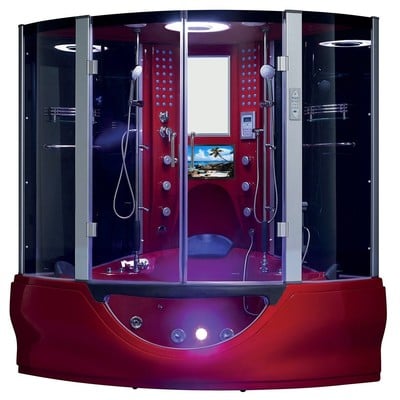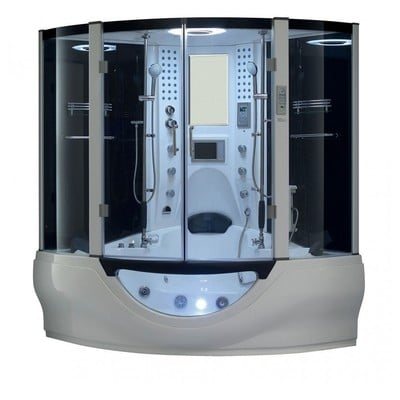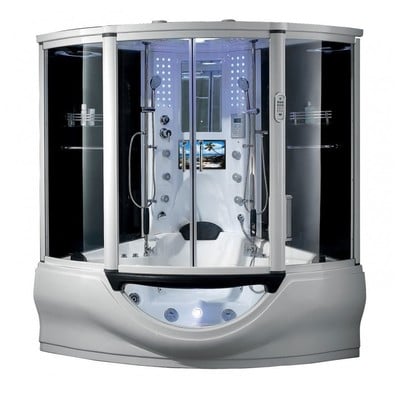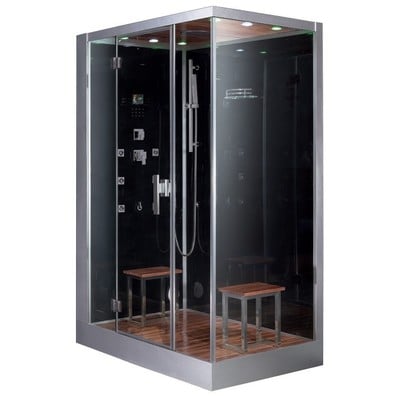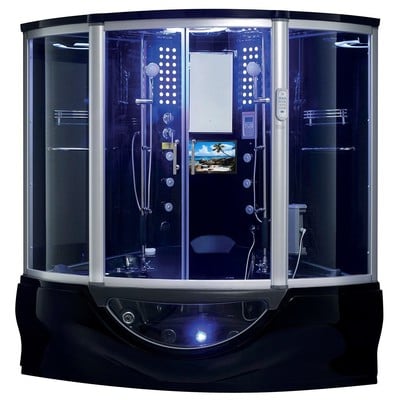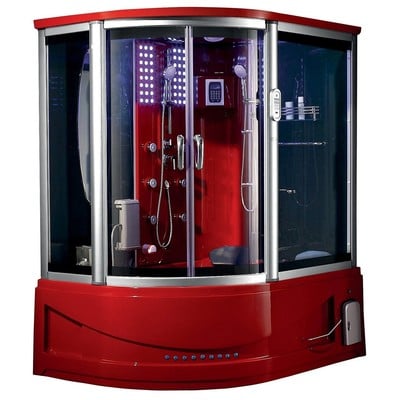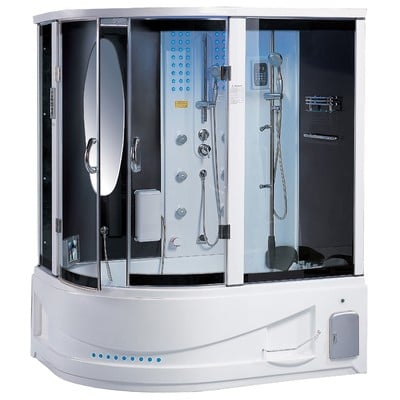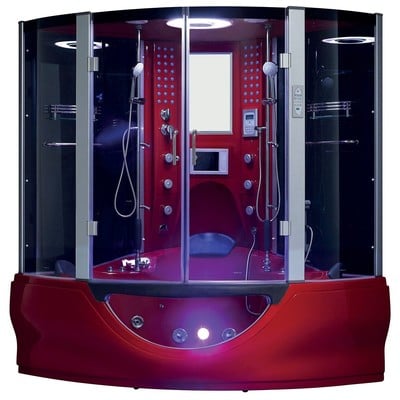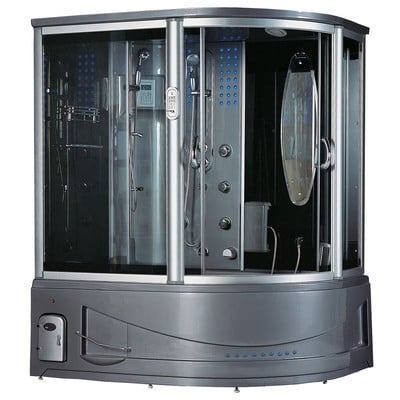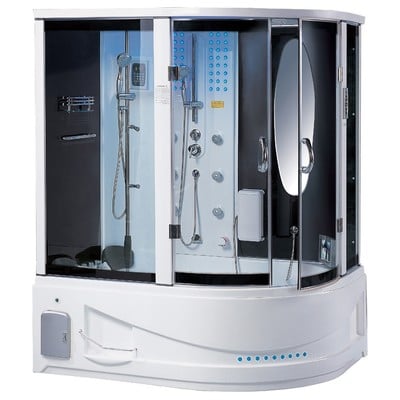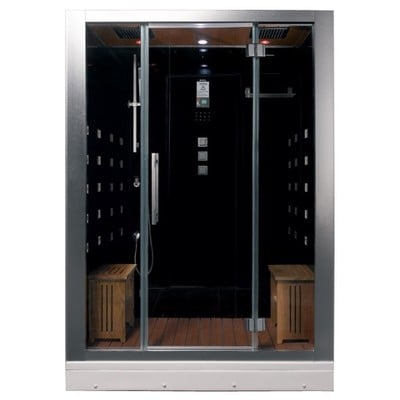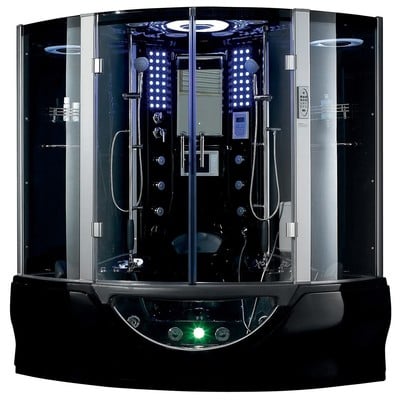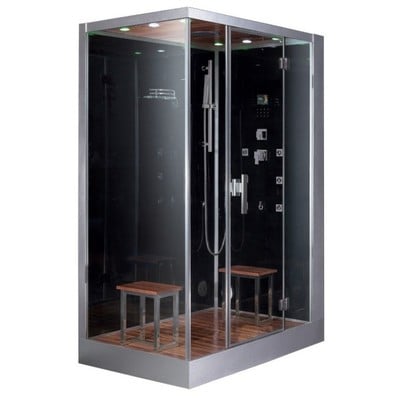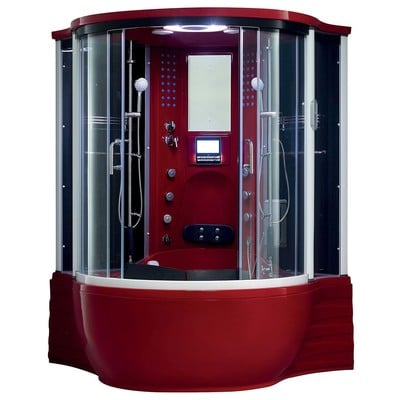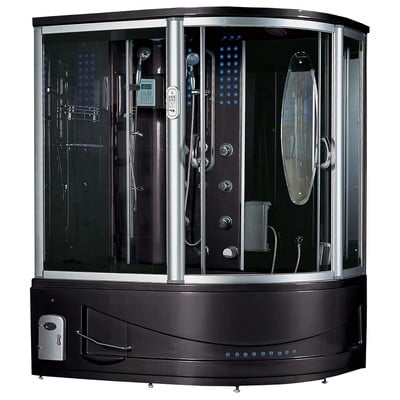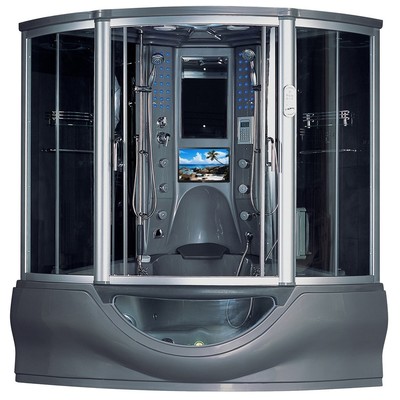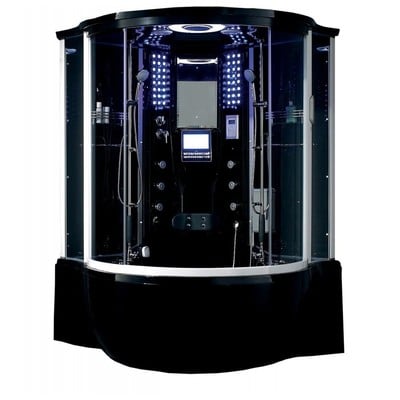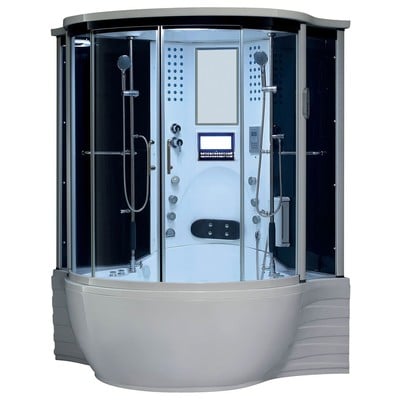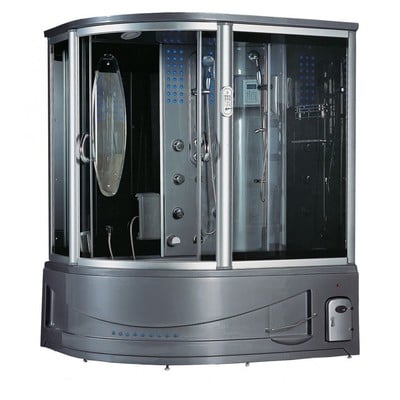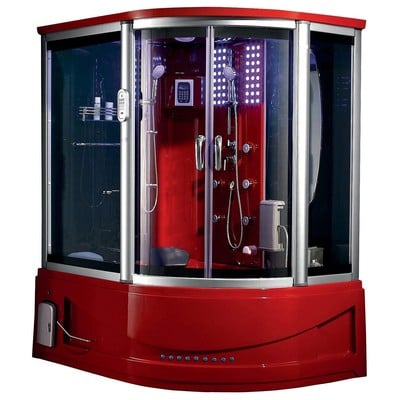Steam showers and saunas are often talked about in the same breath, lumped together as a heat-based, health-beneficial spa treatment that you can install in your home. But the similarities between the two essentially stop there: the experience of using them is different, the health benefits are different, and even the installation, construction, and cost vary widely. So today I want to clear up a little of the misinformation out there and take an honest look at the factors you should consider when choosing between the two.
What Is A Sauna?
Saunas Are Made Out Of Wood And Sometimes Glass, With Hot Rock Electric Heaters That Produce A High, Dry Heat (by Markay Johnson Construction)Saunas are made entirely of wood, with wood planked walls, floor, and ceiling, as well as wooden benches along the walls, and are designed to be freestanding. An electric or gas (or, for traditional versions, fire) powered sauna heater topped with volcanic rocks is used to raise the temperature inside the sauna room to between about 150 and 200 degrees Fahrenheit. Water can be poured over the rocks for a burst of steam, but humidity levels generally stay between 10-30%. This dry heat allows saunas to be safely raised to much higher temperatures than a steam shower.
What Is A Steam Shower?

Conversely, steam showers are typically made of non-porous materials like tile or glass, and generally incorporate regular shower functionality into the design. While sauna heaters are located within the sauna, steam generators are typically placed outside, in a cabinet or closet within about 25-60 feet of the shower. When the steam shower is in use, the generator fills with water and boils it, pumping steam into the shower enclosure through a small steam head generally located near the base of the shower. Because steam showers hover at about 100% humidity while in use, they have to stay at a lower temperature (generally between 110 and 115 degrees Fahrenheit) to prevent scalding. The humidity makes the body perceive this moist heat as hotter than it really is, making steam baths feel about as hot as a sauna, despite the lower temperature.
Shop Steam Generators:
Health Benefits
Saunas Provide An Intense, High Heat For Improved Circulation And Detox, While The Lower, Wet Heat Of A Steam Bath Promotes Respiratory Health (by Advanced Renovations Inc.)Because both saunas and steam showers rely on heat, they do share many of the same health benefits. Both help promote circulation and muscle relaxation, and both can help ease aches and pains. But differences in temperature and humidity levels do matter. Both saunas and steam baths encourage sweating, which can help the body detoxify and improve skin health. But the higher heat and drier conditions of a sauna encourage more sweating than the steam bath. On the other hand, the high humidity of a steam bath can help address respiratory issues, improving breathing and clearing out the throat and sinuses.
Installation
Home Saunas Can Be Custom Designed And Built, But Basic Sauna Kits Are Very DIY Friendly, Can Be Installed Almost Anywhere, And Often Custom Cut To Fit The Space (by Paoli Design Center)While the experience of using saunas and steam baths is superficially similar, the practical aspects of installation begin to vary widely. Saunas are designed to be totally freestanding. With few exceptions, they don’t need drainage or additional ventilation hookups, they’re largely heat tight, and don’t produce enough moisture for water damage or mold or mildew to be a concern. They can be installed indoors or out, and are frequently sold in kits that can easily be assembled by a moderately experienced DIYer. In fact, other than needing an electrician to wire in the heater, the whole process of building a sauna is extremely straightforward and minimally invasive.

Built in steam showers, on the other hand, absolutely must be part of a larger project, as they need to be built from the subfloor up. Water is a major, major factor when building a steam shower: the shower floor, walls, and ceiling all need to be well waterproofed even before the tile is laid. The ceiling of the shower should be fairly low (not more than 8′) so as not to overwork the steam generator, and should be sloped to encourage condensation to roll off to the sides rather than clinging to the ceiling or dripping into the middle of the shower. A steam shower needs to be fully enclosed with well-sealed, steam-tight shower doors to prevent moisture from escaping, and even so the bathroom on the whole needs to have very, very efficient ventilation to ensure the water vapor doesn’t cause damage to the surrounding area.
Space Allotment/Location
Saunas Can Easily Be Built Large Enough For A Crowd, And Are A Great Feature To Have Poolside, As You Can Cool Off Quickly In The Water Between Heat Sessions (by MCM Construction Inc.)Another important consideration is how much space your steam shower or sauna is going to take up. Both types are available in a wide variety of sizes, from small stalls just big enough for one to much larger enclosures that can fit several people at once. Saunas are designed with insulated walls, and that combined with their use of electric heat means they can be quite large (seating six or more people) without taxing the heater. And because they have a freestanding installation, there’s a lot more freedom to put them in parts of the home beyond the bathroom, or even outdoors.

Steam showers, on the other hand, are more efficient in slightly more compact spaces. While it’s entirely possible to design a steam shower that will fit more people, the larger the space, the larger the steam generator you’ll need, and the more water it will use. That said, because steam showers offer the full functionality of a standard shower, they can be installed in practically any bathroom that has room for a freestanding shower. While saunas have to be installed on their own, steam showers can easily be scaled to fit the existing space. The added shower functionality also makes it easy to quickly cool down, wash off, and douse all the steam once you’re finished.
Pre-Fab Models

Both saunas and steam showers are available in pre-assembled, freestanding models. With a sauna, buying pre-assembled won’t mean a huge difference in the finished product (even models that use infrared rather than electric heat still work about the same), but will save you the time, labor, and electrical work, as they can often simply be plugged in. But pre-assembled steam showers eliminate many of the major drawbacks of built in steam showers. Because they come in a single solid, waterproof, steam-tight unit, they can be installed just like a traditional shower or bathtub stall. You’ll still need to make sure the bathroom is adequately ventilated, but you won’t have to entirely dig out and rebuild your whole bathroom, and the shower and tub can be built into a single unit. Unfortunately, these don’t always have that same, luxurious, spa-like look that a tiled steam shower does, but they’re much simpler to install and much less expensive.
Shop Steam Shower Units:
What are you looking for in a steam bath or sauna? Do you prefer a moist or dry heat? Let me know about your project in the comments below!



